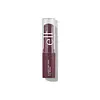Yves Saint Laurent Rouge Volupté Candy Glaze Lip Gloss Stick Versus e.l.f. cosmetics Hydrating Core Lip Shine
What's inside
What's inside
 Key Ingredients
Key Ingredients

 Benefits
Benefits

 Concerns
Concerns

 Ingredients Side-by-side
Ingredients Side-by-side

Diisostearyl Malate
EmollientBis-Behenyl/Isostearyl/Phytosteryl Dimer Dilinoleyl Dimer Dilinoleate
EmollientPentaerythrityl Adipate/Caprate/Caprylate/Heptanoate
EmollientVp/Hexadecene Copolymer
Paraffin
PerfumingOctyldodecanol
EmollientCera Microcristallina
Emulsion StabilisingCI 45410
Cosmetic ColorantSorbitan Sesquioleate
EmulsifyingSynthetic Wax
AbrasiveAlumina
AbrasiveDisteardimonium Hectorite
StabilisingCI 15985
Cosmetic ColorantTocopheryl Acetate
AntioxidantEthylene/Propylene Copolymer
AbrasivePropylene Carbonate
SolventParfum
MaskingDextrin Palmitate
EmulsifyingTocopherol
AntioxidantMangifera Indica Seed Oil
EmollientSodium Hyaluronate
HumectantCaprylic/Capric Triglyceride
MaskingWater
Skin Conditioning1,2-Hexanediol
Skin ConditioningMangifera Indica Fruit Extract
Skin ConditioningPunica Granatum Fruit Extract
AntioxidantDiisostearyl Malate, Bis-Behenyl/Isostearyl/Phytosteryl Dimer Dilinoleyl Dimer Dilinoleate, Pentaerythrityl Adipate/Caprate/Caprylate/Heptanoate, Vp/Hexadecene Copolymer, Paraffin, Octyldodecanol, Cera Microcristallina, CI 45410, Sorbitan Sesquioleate, Synthetic Wax, Alumina, Disteardimonium Hectorite, CI 15985, Tocopheryl Acetate, Ethylene/Propylene Copolymer, Propylene Carbonate, Parfum, Dextrin Palmitate, Tocopherol, Mangifera Indica Seed Oil, Sodium Hyaluronate, Caprylic/Capric Triglyceride, Water, 1,2-Hexanediol, Mangifera Indica Fruit Extract, Punica Granatum Fruit Extract
Diisostearyl Malate
EmollientBis-Diglyceryl Polyacyladipate-2
EmollientPhytosteryl/Isostearyl/Cetyl/Stearyl/Behenyl Dimer Dilinoleate
Skin ConditioningOctyldodecanol
EmollientPolyisobutene
Polyethylene
AbrasivePentaerythrityl Tetraisostearate
EmollientNeopentyl Glycol Diethylhexanoate
EmollientIsotridecyl Isononanoate
EmollientMicrocrystalline Wax
Emulsion StabilisingPentaerythrityl Adipate/Caprate/Caprylate/Heptanoate
EmollientIsostearic Acid
CleansingDibutyl Lauroyl Glutamide
Skin ConditioningParfum
MaskingDibutyl Ethylhexanoyl Glutamide
Skin ConditioningCaprylyl Glycol
EmollientTocopheryl Acetate
AntioxidantEthylhexylglycerin
Skin ConditioningHexyl Cinnamal
PerfumingAluminum Hydroxide
EmollientTriethoxycaprylylsilane
Linalool
PerfumingDiisostearyl Malate, Bis-Diglyceryl Polyacyladipate-2, Phytosteryl/Isostearyl/Cetyl/Stearyl/Behenyl Dimer Dilinoleate, Octyldodecanol, Polyisobutene, Polyethylene, Pentaerythrityl Tetraisostearate, Neopentyl Glycol Diethylhexanoate, Isotridecyl Isononanoate, Microcrystalline Wax, Pentaerythrityl Adipate/Caprate/Caprylate/Heptanoate, Isostearic Acid, Dibutyl Lauroyl Glutamide, Parfum, Dibutyl Ethylhexanoyl Glutamide, Caprylyl Glycol, Tocopheryl Acetate, Ethylhexylglycerin, Hexyl Cinnamal, Aluminum Hydroxide, Triethoxycaprylylsilane, Linalool
Ingredients Explained
These ingredients are found in both products.
Ingredients higher up in an ingredient list are typically present in a larger amount.
Diisostearyl Malate is an emollient and most often used in lip products. It comes from isostearyl alcohol, a fatty acid, and malic acid, an AHA.
As an emollient, Diisostearyl Malate helps create a thin film on your skin to trap moisture in. This helps keep your skin soft and smooth.
Octyldodecanol is a fatty alcohol. It is primarily used to enhance the texture of products.
As an emulsifier, Octyldodecanol helps prevent the oils and waters from separating. It also prevents ingredients from creating foam when shaken.
Octyldodecanol is created by reducing fatty acid to an alcohol.
Due to its high molecular weight, it does not get absorbed into the skin.
Learn more about OctyldodecanolParfum is a catch-all term for an ingredient or more that is used to give a scent to products.
Also called "fragrance", this ingredient can be a blend of hundreds of chemicals or plant oils. This means every product with "fragrance" or "parfum" in the ingredients list is a different mixture.
For instance, Habanolide is a proprietary trade name for a specific aroma chemical. When used as a fragrance ingredient in cosmetics, most aroma chemicals fall under the broad labeling category of “FRAGRANCE” or “PARFUM” according to EU and US regulations.
The term 'parfum' or 'fragrance' is not regulated in many countries. In many cases, it is up to the brand to define this term.
For instance, many brands choose to label themselves as "fragrance-free" because they are not using synthetic fragrances. However, their products may still contain ingredients such as essential oils that are considered a fragrance by INCI standards.
One example is Calendula flower extract. Calendula is an essential oil that still imparts a scent or 'fragrance'.
Depending on the blend, the ingredients in the mixture can cause allergies and sensitivities on the skin. Some ingredients that are known EU allergens include linalool and citronellol.
Parfum can also be used to mask or cover an unpleasant scent.
The bottom line is: not all fragrances/parfum/ingredients are created equally. If you are worried about fragrances, we recommend taking a closer look at an ingredient. And of course, we always recommend speaking with a professional.
Learn more about ParfumWe don't have a description for Pentaerythrityl Adipate/Caprate/Caprylate/Heptanoate yet.
Tocopheryl Acetate is AKA Vitamin E. It is an antioxidant and protects your skin from free radicals. Free radicals damage the skin by breaking down collagen.
One study found using Tocopheryl Acetate with Vitamin C decreased the number of sunburned cells.
Tocopheryl Acetate is commonly found in both skincare and dietary supplements.
Learn more about Tocopheryl Acetate